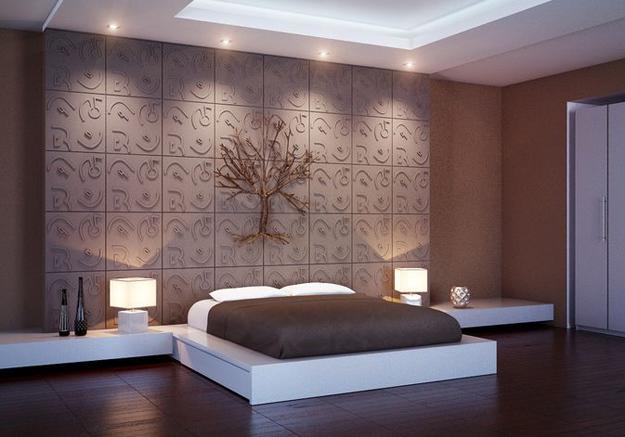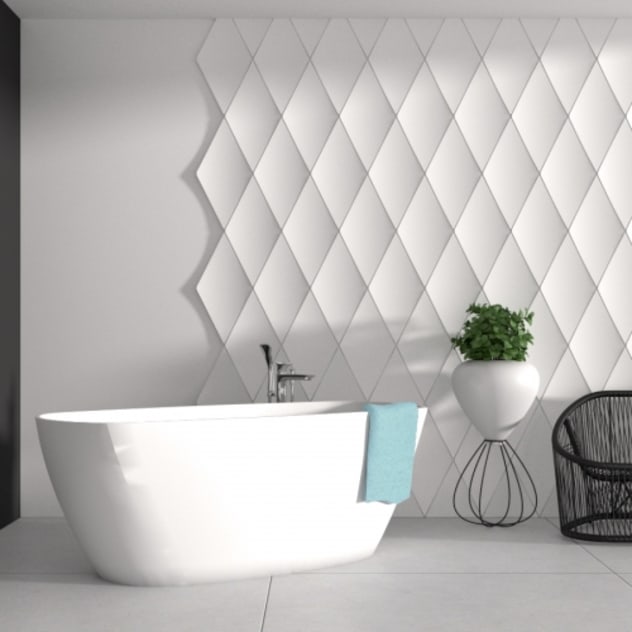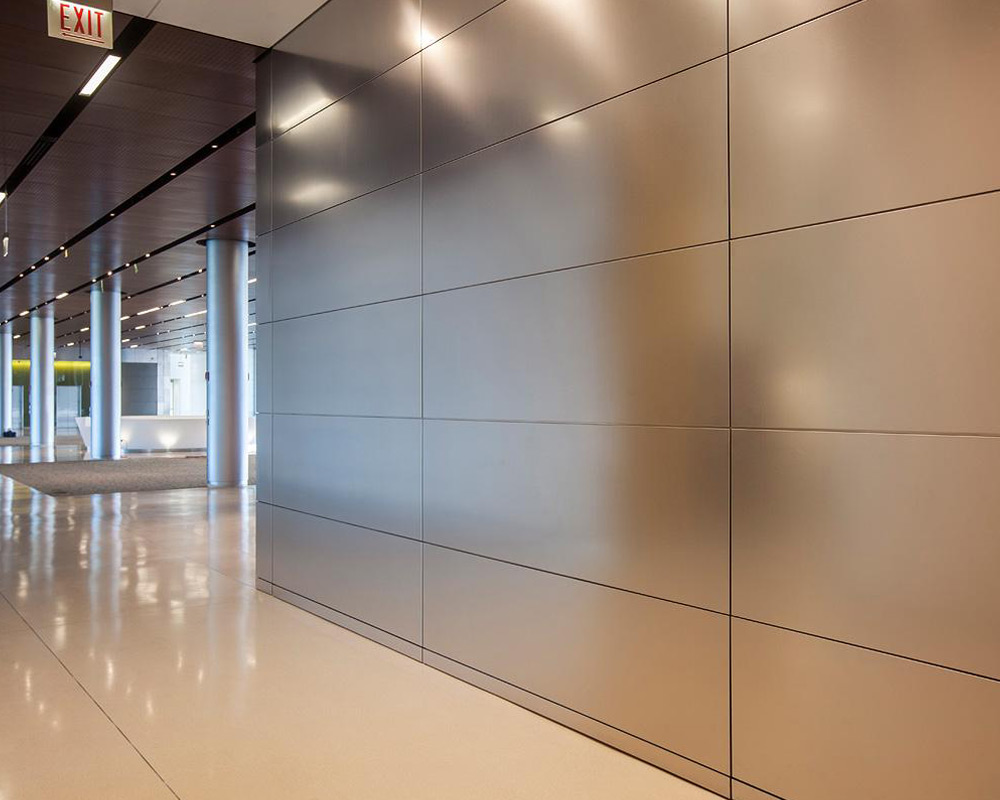Wall panels have come a long way from the dated mid-century installations. Modern wall panels for buildings offer a range of benefits, including high-tech materials, low-maintenance, and easy installations. Today’s wall panels have evolved from the natural wood and intricately carved panels of the earlier years. Modern materials such as medium-density fiberboard and melamine etc. are more durable and impact-resistant, making them suitable for high-traffic areas when scuffing and denting are likely to occur. Decorative wall panels are available in a variety of textures, finishes, and grains with unique patterns.
Benefits of decorative wall panels for your building architecture
- Tongue-and-groove designs and clipping systems make modern wall paneling for your building installation easier. You need the right dimensions and an experienced installer
- Modern materials are not limited to wood anymore, their medium-density fiberboard and melamine are more durable and impact-resistant, making them suitable for high-traffic areas when scuffing and denting are likely to occur. The materials are also moisture-resistant that can be installed in kitchens and bathrooms without warping or rotting.
- Wall paneling serves much more than a decorative purpose. It protects your walls from damage, it also serves a functional purpose. Impact-resistant paneling is less likely to be dented or scratched. They are also easier to clean or replace a section of paneling
- There are numerous ways to cover your walls with paneling. Reclaimed wood is a rustic option for creating an accent wall. Wainscoting adds character to the bottom half of the wall with beadboard or v-groove paneling. Board and batten paneling draw your eye upward with vertical boards, while shiplap serves as a horizontal wall treatment.
- No matter how artistic wall decor or unique furniture items you use, the look of the room is marred by the sight of wires or cables tangled together behind the TV unit or in a corner. But once you install a decorative panel on the wall, this mess will not be visible anymore.
- Unlike the painted walls or wallpapers, these decorative wall panels don’t have to be cleaned daily. Besides, their durability saves you from the hassle of frequent repairing of the walls.
- Apart from a myriad range of colors and prints, panels can also simulate natural textures like wood and stone, adding a whole new dimension to your space. Use them to cover an entire wall or cover only a segment to define a focal point.
- Reusing and repurposing elements is an integral part of the Indian lifestyle. Decorative wall panels can be easily removed without damaging the product or your walls.
Materials Used in Decorative Wall Panels
- Wood: These are made of planks or sheets of solid wood, engineered board, or other wood-like products.
- Wainscot: It is made of wood and synthetic materials.
- Veneer and Laminate: These are composed of particleboard substrate or wood veneer.
- Metal: Made from a variety of materials, including Aluminum, Copper Stainless steel, Titanium and Zinc.
- MDF: This is manufactured by dry pressing wood shavings at a high temperature.
- Fabric: These are wood panels padded with foam and batting and then covered with fabric.
- Chipboard: This is made by hot pressing sawdust and chips.
- PVC: It is made of rigid polyvinyl chloride with a small amount of plasticizer.
- Glass: It can give you sleek mirror-finished walls.
Different types of Decorative Wall Panels
Wainscoting wall panels
Wainscot is commonly used to keep walls safe from damage and blemishes in heavy-traffic areas like entryways, stairways and hallways. This decorative element can be found in a variety of materials and used with many décor styles. This type of wall paneling is used on the interior of a space and covers the lower portion of the wall. While it has the protective function of adding a layer over the wall material and paint, wainscoting’s main purpose is decorative. Wainscoting is particularly well suited to rooms that take a lot of wear and tear. Besides protection, it will also give elegant armor to your walls. Using a combination of chair rail, trim and moldings, wainscoting typically runs horizontally along the lower portion of a wall. You can use wainscoting on entries, stairs and hallways, eating areas, family rooms and dens, baths, kids’ rooms. With many options for finishing and design, this style of molding presents countless possibilities for individualizing and adding value to your home. The main elements of all different types of wainscoting are the panels as well as the frames that are built around those panels. The frame itself is made up of four different pieces – the two rails on the top and bottom as well as the stiles on the sides. Depending on the look and image that you are interested in creating within your home, you may need to invest in raised-panel, flat-panel, board-and-batten or even beadboard wainscoting.

Bead boarding wall panels
Beadboard is a type of narrow paneling that can be used as wainscoting on walls and even as a treatment for ceilings. The name comes from the raised, rounded ridge or “bead” in between each panel — look at the edge of a plank of beadboard and you’ll see it. Older versions of beadboard used to be installed panel by panel, but today it comes in tongue-and-groove sheets that make it easier to cover a wall quickly. It can be installed vertically (the traditional orientation), or horizontally for a more modern feel. Full beadboard walls aren’t as common as partial walls and wainscoting; most use pair white beadboard paneling with a thin strip of wall above. Beadboard’s construction makes it a durable pick for bathrooms and kitchens, where there tends to be a lot of moisture lingering in the air, and in humid climates, because the built-in space for expansion means the wood will not crack—that’s why beadboard is a classic beach or lake house paneling choice. The same features that make beadboard great for humid spaces also make it great for high-traffic ones: A few scuffs and dings on beadboard wainscoting or wall will only add to the room’s relaxed charm rather than make a space feel dingy and unclean.

Shiplap wall panels
The use of shiplap has proven to be the most cost-effective. It is the cheapest method compared to other methods like cement board and plywood siding. This is so because it is cut from pine or other inexpensive woods. One of the major reasons why you should consider shiplap siding is because of its beautiful natural appearance. This type of siding is just cut from natural and beautiful woods like pine, oak or cedar. Because it is installed by hand, you get that craftsman to feel then it is the case with aluminum or of a wooden siding. Another fascinating fact is, it provides a transition that is logical as you move from one room to another, much thanks to the seamless line through space. Shiplap can be used effectively in almost any room in the home, and outdoors too. It can be used in their living rooms, bathrooms, kitchens, bedrooms, and garages throughout the country.

Tile Board wall panels
A tile board is an MDF board (medium density fiberboard) with a layer of melamine on top, which looks like an ordinary ceramic tile. These have grooves to mimic the tile joints. These are much easier and quicker to install, as there is no civil work involved. So, conceptually, the smaller the size of the panel, the more will be the numbers of the frame and hence it will be more cumbersome. Therefore, this system is beneficial to fix the larger size of panels. Tileboard is widely recognized as an inexpensive, low-end product, and it should be used in areas where that reputation is not a drawback. Tileboard used in a laundry room or as wainscoting in a utility room will not raise eyebrows, but installing it in a master bathroom or even a regularly used guest bathroom may lower the real estate value of your home. If you are prepping a home for sale, tileboard is an improvement over bare walls, but it is less appealing than almost any other wall covering.

Acoustics wall panels
An acoustic panel is a sound-absorbing panel used to mitigate noise and reduce the reverberation and echo in space. Vertical wall panels help mitigate sound transfers in space, preventing sound travels from one end of the room to the other. These will help absorb the sound, reducing the number of waves that are sent back into the room. Vertical panels may also aid in lowering background noise to an acceptable level. Horizontal panels, on the other hand, are primarily used for direct absorption. To stop sound waves from spreading, absorptive panels must be used to convert the sound energy into heat through friction. Made from sound-absorbing materials or soft acoustic foam, all our horizontal panels are performing well in terms of absorption. For improved acoustic performance, install the panels in different suspension heights. The air pockets between the panels will capture sound waves, preventing them from traveling even further in spaces with high ceilings.

Board and Batten wall panels
Board and batten can be installed vertically, horizontally, or both. It’s also cheap to repair due to its use of individual pieces rather than large sheets of siding. When installed and taken care of properly, board and batten can last for many years if not decades. This long-lasting siding is perfect if you want to replace it as little as possible. Though board and batten siding has traditionally been used for wooden exteriors, many home contractors today use this design for other types of siding alternatives. Vinyl siding, fiber cement siding, engineered wood siding, aluminum siding, and other alternative cladding options have incorporated board and batten aesthetics. Another aesthetic benefit of board and batten siding is that it can be used for many different home styles. While this exterior cladding option is most often associated with barn-style homes, it can also be incorporated into cabins and even more modernist constructions.

Metal wall panels
These panels are formed of aluminum but can be made of steel, zinc, copper, stainless steel or titanium) to a core that is made of polyethylene or other fire-retardant plastic material, and bonded under a specific temperature, pressure, and tension. The end product is a metal/plastic composite with greater benefits than just using a solid metal panel of the same thickness. They can come insulated or uninsulated and can be made with protective coatings that help fight corrosion and fading. However, since they are less rigid than other types of metal wall panels, they are still very susceptible to damage, especially at ground level. Most wall panels of this type can be installed horizontally or vertically in less time and with less of the cost of other metal panel systems. Metal wall panels have beautiful appearances for both interior and exterior applications on commercial or residential buildings. They come in a wide variety of colors, have shiny or matte finishes, and can be shaped and formed into different patterns. The diverse nature of metal wall panels makes them extremely easy for architects and interior designers to use in their projects. Metal walls are considered to be eco-friendly and sustainable materials to use in building construction. They can also help with reducing energy consumption. Another advantage of using metal is that it can be recycled, and still keep its physical properties.

Stone facade wall panels
Natural stone offers all the advantages of a sustainable material combined with the benefits of a ventilated façade: energy efficiency, savings on maintenance costs (air conditioning and heating) or thermal insulation. When it’s time to decide the external cladding material for a ventilated façade, natural stone can be a wise choice. A stone wall panel offers the ideal combination of traditional and contemporary performance. It enables the use of natural stone such as marble, granite or limestone in a convenient format that is compatible with lighter building structures. Natural materials can be used to provide a high-end look, along with durability and extended service life. Limestone or granite can fit in well with the local built environment, offering a wall panel for residential and commercial buildings, heritage buildings etc.

Conclusion
When it comes to home improvement, decorative wall panels bring a range of benefits that make them a great choice for your buildings From numerous design options to extraordinary durability, wall panels offer both functional and aesthetic solutions for any building. With such diverse options, you can easily add high-end sophistication to your building.
Analysis of Decorative Wall Panels
Benefits of decorative wall panels for your building architecture
Materials Used in Decorative Wall Panels
Different types of Decorative Wall Panels
Wainscoting wall panels
Bead boarding wall panels
Shiplap wall panels
Tile Board wall panels
Acoustics wall panels
Board and Batten wall panels
Metal wall panels
Stone facade wall panels

